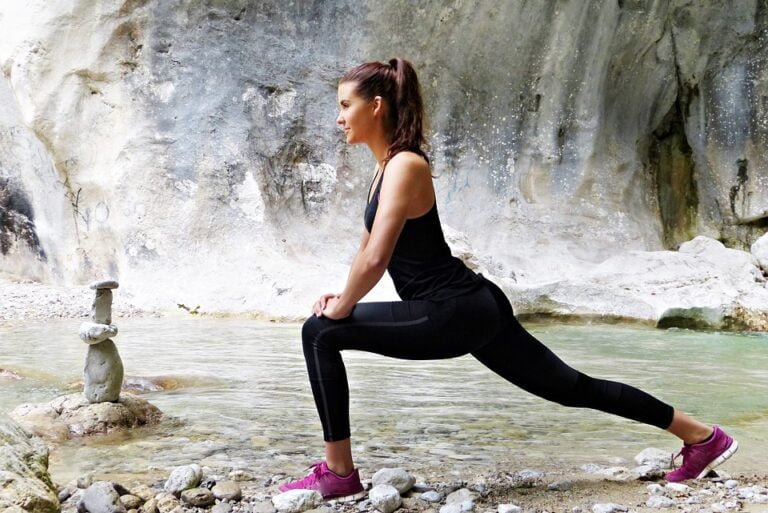
[ad_1]
Walking Meditation
Walking meditation is a practice that combines the physical activity of walking with the mindfulness and focus of meditation. It is a form of meditation that can be particularly beneficial for those who find it challenging to sit still for long periods of time, or for individuals who enjoy being in nature. Walking meditation allows you to cultivate a sense of presence and awareness while engaging in a gentle physical activity.
Benefits of Walking Meditation
Engaging in walking meditation offers a variety of benefits for both the body and the mind. Some of the key benefits include:
- Improved Mindfulness: Walking meditation can help individuals develop a greater sense of mindfulness and awareness in their daily lives.
- Physical Exercise: The practice provides a gentle form of physical exercise, which can contribute to overall health and well-being.
- Stress Reduction: Walking meditation can be an effective way to reduce stress and anxiety, promoting emotional well-being.
- Connection to Nature: By practicing walking meditation outdoors, individuals can connect with nature and experience a sense of calm and tranquility.
How to Practice Walking Meditation
Practicing walking meditation is relatively simple and can be adapted to suit individual preferences and environments. Here are some steps to get started:
- Find a Suitable Location: Choose a location that is conducive to walking meditation, such as a quiet park, beach, or forest.
- Begin Walking: Start walking at a comfortable pace, paying attention to the sensation of each step as your foot makes contact with the ground.
- Focus on Your Breath: Bring your awareness to your breath as you walk, observing the inhalation and exhalation with each step.
- Stay Present: Be fully present in the moment, noticing the sights, sounds, and sensations around you as you walk.
- Set an Intention: You may choose to set an intention for your walking meditation practice, such as cultivating gratitude or finding peace.
- Conclude Mindfully: When you are ready to conclude your practice, do so mindfully, taking a moment to reflect on the experience.
Walking Meditation Techniques
There are different techniques and variations of walking meditation that individuals can explore. Some popular techniques include:
- Awareness of Breath: Focusing on the breath while walking, synchronizing each step with the inhalation and exhalation.
- Mantra Walking: Reciting a mantra or affirmation with each step, such as “peace” or “I am present.”
- Loving-Kindness Walk: Sending thoughts of loving-kindness and compassion to oneself and others while walking.
- Gratitude Walk: Practicing gratitude by observing the beauty of nature and expressing thanks with each step.
Frequently Asked Questions about Walking Meditation
What is the best time of day to practice walking meditation?
The best time to practice walking meditation is whenever it fits into your schedule and allows you to be fully present. Some people prefer to practice in the morning to set a positive tone for the day, while others find it beneficial as a way to unwind in the evening.
How long should a walking meditation session be?
The duration of a walking meditation session can vary based on personal preference and schedule. It can be as short as 10-15 minutes or extended to 30 minutes or longer, depending on individual comfort and commitment.
Can walking meditation be done indoors?
While walking meditation is often associated with outdoor settings, it can also be practiced indoors. Individuals can walk mindfully in a quiet, spacious room or even in a hallway, focusing on each step and breath.
Is it necessary to walk slowly during walking meditation?
Walking meditation can be practiced at a gentle, deliberate pace, but it is not necessary to walk slowly. The key is to maintain awareness and mindfulness, whether walking at a slow, moderate, or even quick pace.
How does walking meditation differ from traditional seated meditation?
Walking meditation offers a way to cultivate mindfulness and inner peace through a gentle, rhythmic movement. It provides an alternative to traditional seated meditation, allowing those who struggle with sitting still to experience the benefits of mindfulness.
Are there any specific breathing techniques for walking meditation?
While practicing walking meditation, individuals can focus on natural, relaxed breathing. There are no strict rules for breathing techniques, but some may find it helpful to synchronize their breath with their steps, inhaling and exhaling in a rhythmic pattern.
Conclusion
Walking meditation is a valuable and accessible practice that can support overall well-being, mindfulness, and stress reduction. By combining the benefits of physical movement with the mental focus of meditation, individuals can experience greater awareness, connection, and peace. Whether practiced outdoors in nature or indoors, walking meditation offers a flexible and effective approach to nurturing the mind-body connection.
[ad_2]